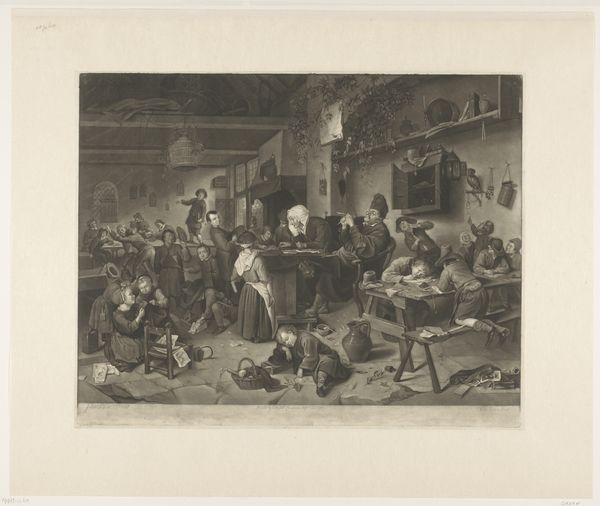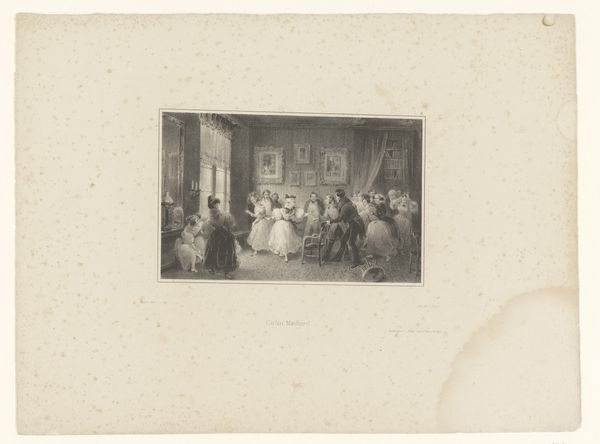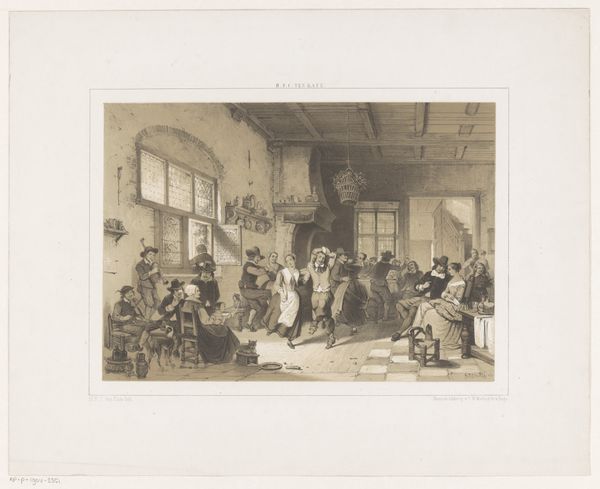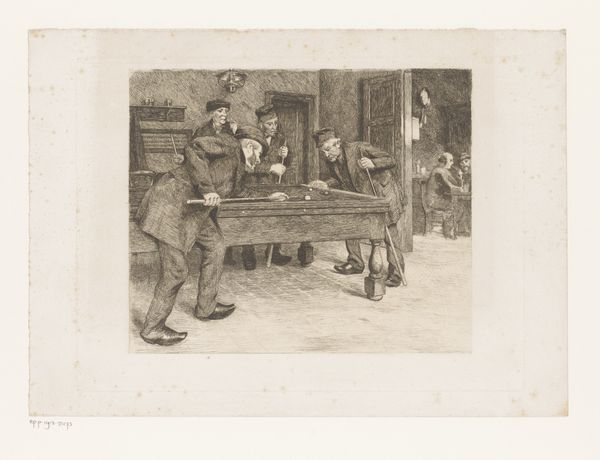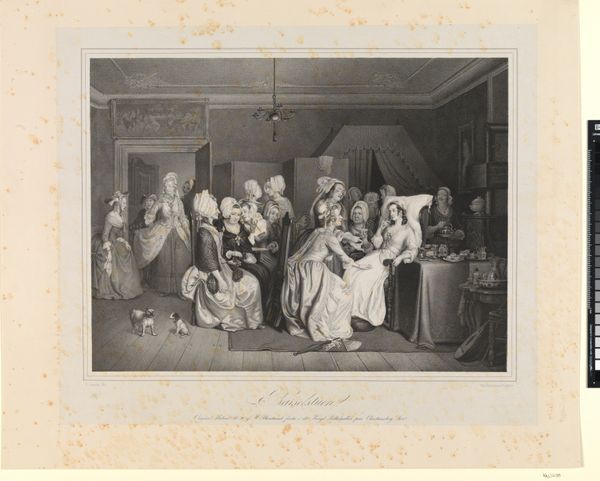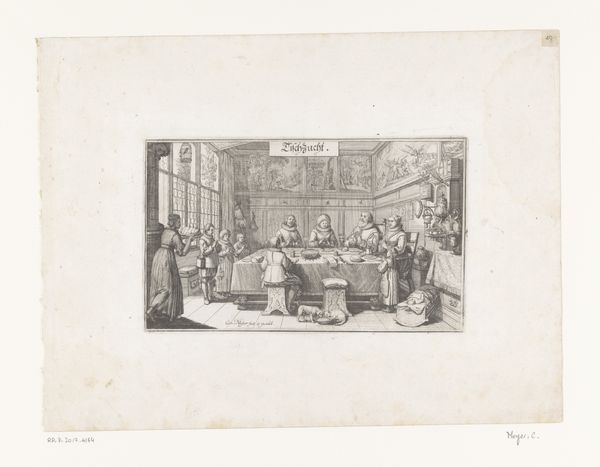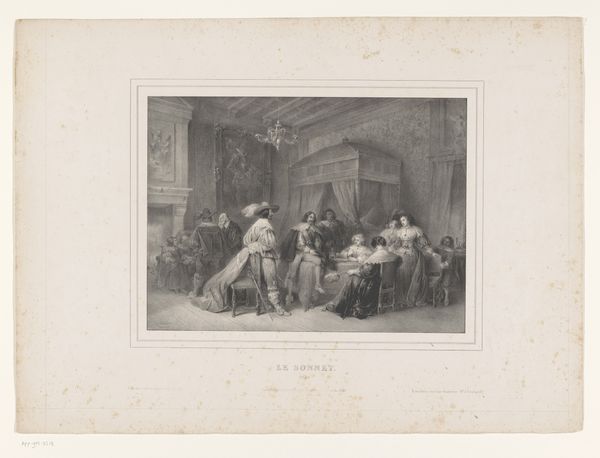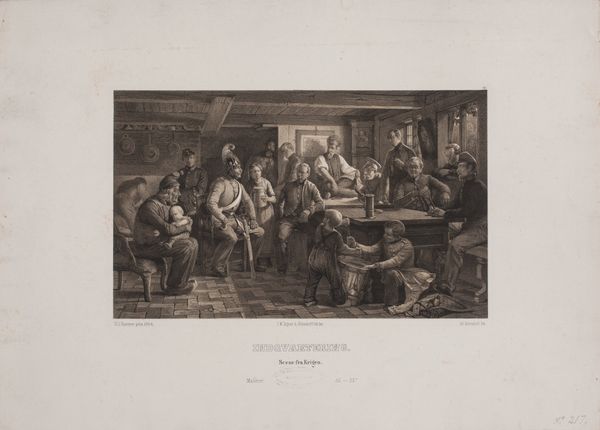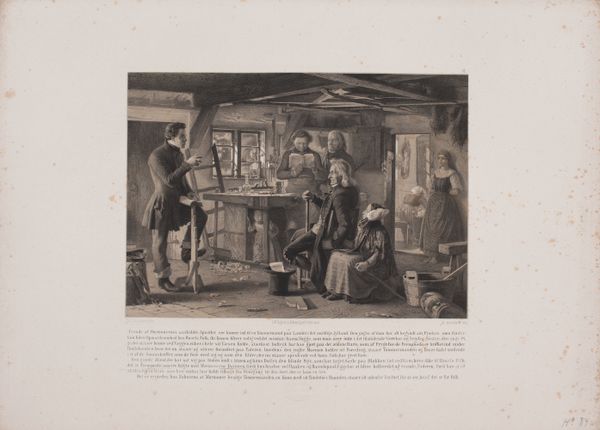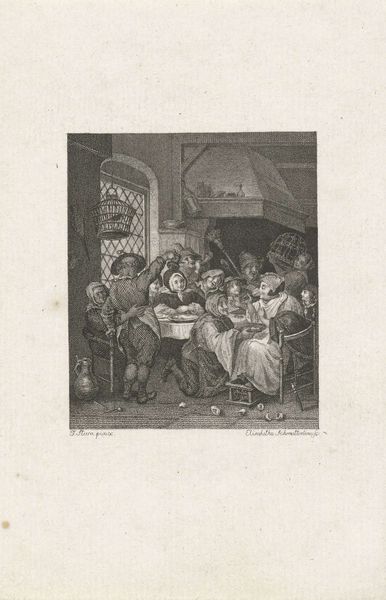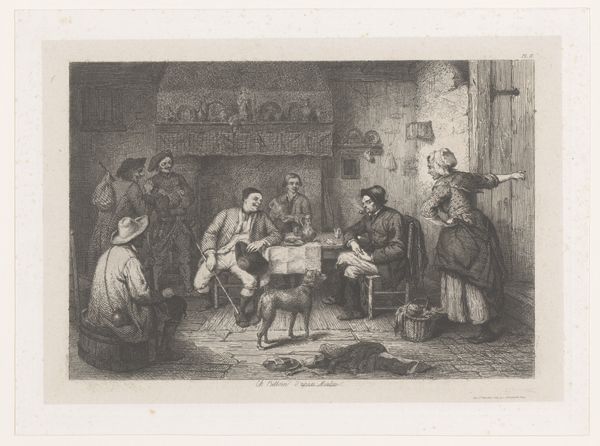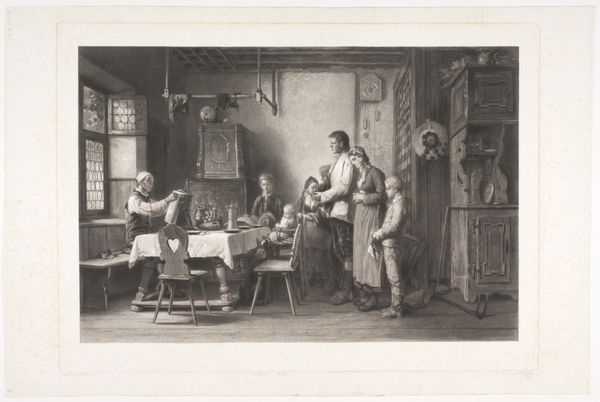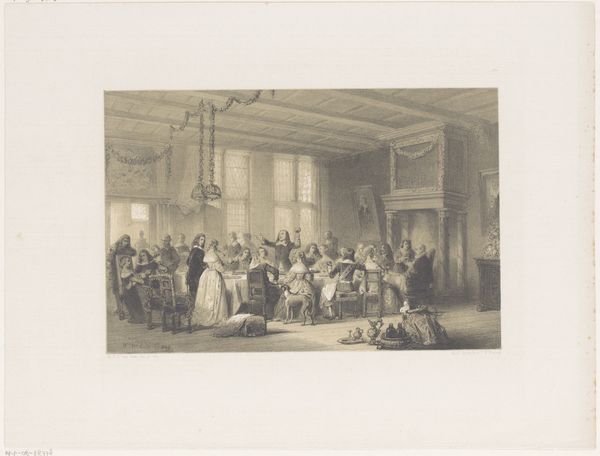
Dimensions: height 119 mm, width 174 mm
Copyright: Rijks Museum: Open Domain
Curator: At first glance, there's a gentleness here, isn't there? The watercolor medium lends this image a soft and subdued palette. Editor: Indeed. This watercolor, "Bruiloftsviering in een Fries burgergezin" by Johan Coenraad Leich, depicts a wedding celebration in a Frisian middle-class family, sometime between 1833 and 1890. Curator: You can see it reflected in the details of the space, as well; it's quite compact. Look at the figures pressed together in such a cozy room. You get such an intimate sense of the home as a stage for communal ritual. Editor: And what that stage communicates culturally! Leich renders the scene as a snapshot of Frisian societal values of the era, highlighting domesticity and community, which he renders into a digestible, if perhaps idealized, tableau for public consumption. It makes me think about what was considered publicly acceptable depictions of weddings and familial intimacy. Curator: The use of watercolor almost softens these values, diffusing the sharper edges of social prescription. This isn't to say they're necessarily removed, but the rendering allows an invitation into their performance rather than an expectation of upholding them. And from a formalist point of view, observe how he layers color, and uses a limited tonal range for cohesion and structure. Editor: And think, too, about the act of depicting middle-class life. There is definitely something to be said about celebrating common people rather than royalty, about shifting the dynamic of who is seen as an appropriate subject for art. Curator: Precisely! And those delicate washes create a sense of atmosphere—one of calm festivity. Thank you, Johan Coenraad Leich, for this peek into a moment captured so exquisitely in watercolor. Editor: Ultimately, viewing the painting now prompts thoughts of change: How weddings were viewed then as opposed to now, and more broadly, the ever shifting representations of societal mores and public consumption.
Comments
No comments
Be the first to comment and join the conversation on the ultimate creative platform.
